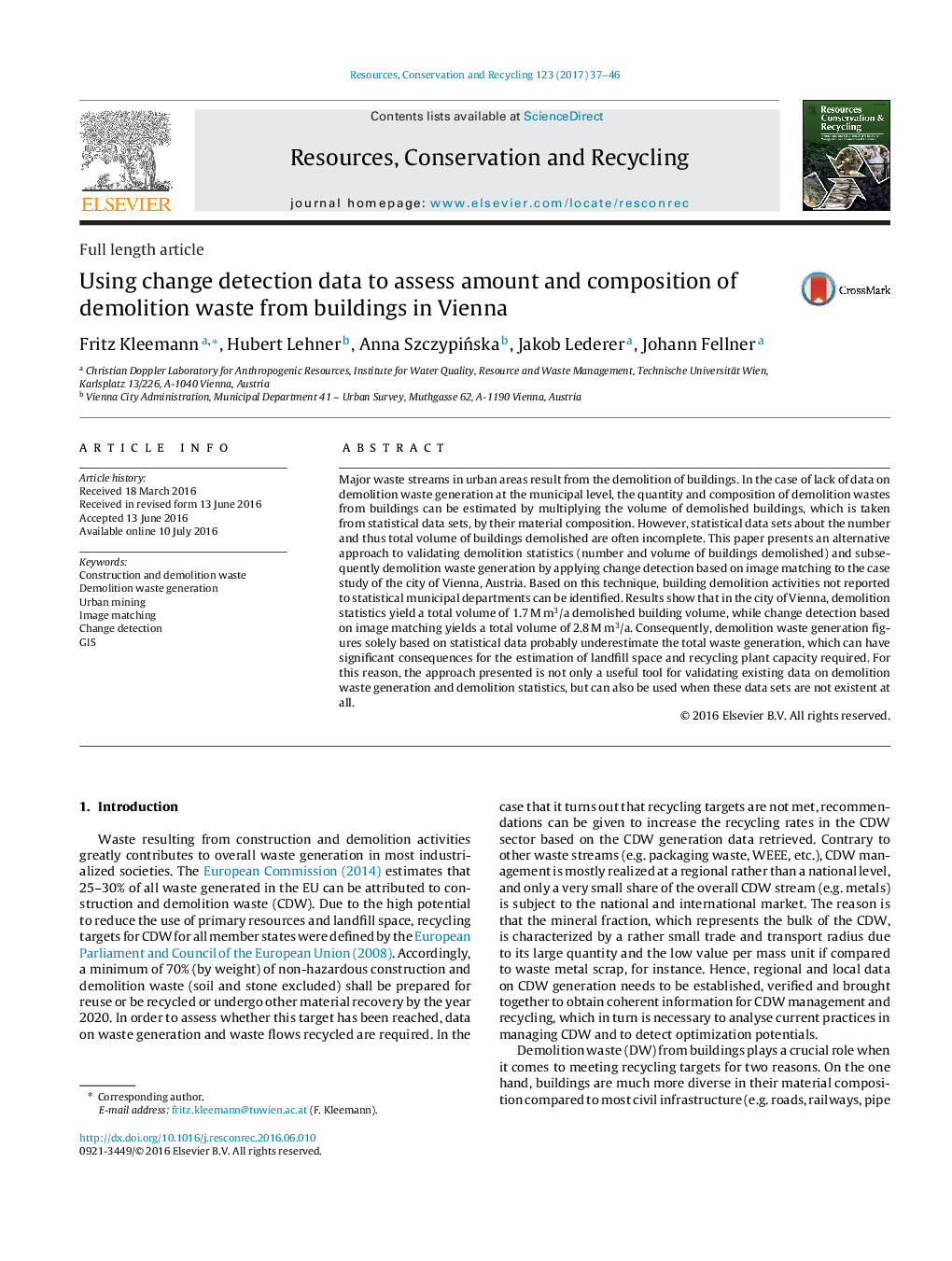| Article ID | Journal | Published Year | Pages | File Type |
|---|---|---|---|---|
| 5118818 | Resources, Conservation and Recycling | 2017 | 10 Pages |
â¢A new approach to assess amount and quality of building demolition waste is proposed.â¢The assessment is based on material information of buildings and image matching based change detection data.â¢The study shows that using available statistics underestimate the waste generation potential of building demolition.
Major waste streams in urban areas result from the demolition of buildings. In the case of lack of data on demolition waste generation at the municipal level, the quantity and composition of demolition wastes from buildings can be estimated by multiplying the volume of demolished buildings, which is taken from statistical data sets, by their material composition. However, statistical data sets about the number and thus total volume of buildings demolished are often incomplete. This paper presents an alternative approach to validating demolition statistics (number and volume of buildings demolished) and subsequently demolition waste generation by applying change detection based on image matching to the case study of the city of Vienna, Austria. Based on this technique, building demolition activities not reported to statistical municipal departments can be identified. Results show that in the city of Vienna, demolition statistics yield a total volume of 1.7Â MÂ m3/a demolished building volume, while change detection based on image matching yields a total volume of 2.8Â MÂ m3/a. Consequently, demolition waste generation figures solely based on statistical data probably underestimate the total waste generation, which can have significant consequences for the estimation of landfill space and recycling plant capacity required. For this reason, the approach presented is not only a useful tool for validating existing data on demolition waste generation and demolition statistics, but can also be used when these data sets are not existent at all.
